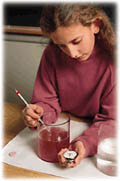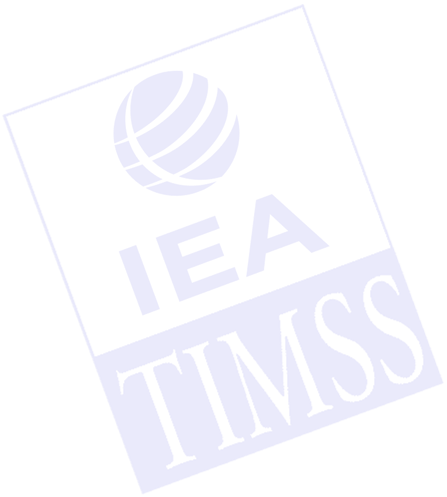TIMSS Achievement Items TIMSS has made available to the public about two-thirds of the mathematics and science items administered to students in 1994-95. Click here to view or download the released items sets for third and fourth grade (Population 1), seventh and eighth grade (Population 2), and the final year of secondary school (Population 3).
Data Almanacs for Achievement Items This page contains links to obtain country-by-country results for each item in the TIMSS tests. These data are presented in two forms: (1) percent correct on each item and (2) distribution of responses for each item (i.e., percent of students selecting each response option for multiple-choice items and percent receiving each score for open-ended items). Click here for Data Almanacs.
What is TIMSS 1995?
The Third International Mathematics and Science Study (TIMSS) is the largest and most ambitious international study of student achievement ever conducted. In 1994-95, it was conducted at five grade levels in more than 40 countries (click for list) (the third, fourth, seventh, and eighth grades, and the final year of secondary school). Students were tested in mathematics and science and extensive information about the teaching and learning of mathematics and science was collected from students, teachers, and school principals. Altogether, TIMSS tested and gathered contextual data for more than half a million students and administered questionnaires to thousands of teachers and school principals. Also, TIMSS investigated the mathematics and science curricula of the participating countries through an analysis of curriculum guides, textbooks, and other curricular materials. The TIMSS results were released in 1996 and 1997 in a series of reports, providing valuable information to policy makers and practitioners in the participating countries about mathematics and science instruction and the achievement of their students. Technical reports and the complete international database also have been published.
How Did TIMSS Measure Achievement?
The TIMSS Curriculum Frameworks for Mathematics and Science served as the basis for constructing the TIMSS tests. They are an organizing structure within which the elements of school mathematics and science can be described, categorized, and discussed. Developed by working groups of mathematics and science educators, with input from the TIMSS National Research Coordinators, the Frameworks represent a consensus developed among many individuals and groups from around the world.
|
|
|
| Mathematics | Science |
|
|
|
|
|
|
|
|
|
|
|
|
|
|
|
Achievement Tests In 1995, seven achievement tests were administered by TIMSS to students around the world:
| Third and Fourth Grades | Seventh and Eighth Grades | Final Year of Secondary School |
| Mathematics | Mathematics | Mathematics and Science Literacy |
| Science | Science | Advanced Mathematics |
| Physics |
The TIMSS achievement tests were developed through an international consensus-building process involving input from international experts in mathematics, science, and measurement, and endorsed by all participating countries. Working within the TIMSS curriculum frameworks, test specifications were developed that included items representing a wide range of mathematics and science topics and eliciting a range of skills from students. The TIMSS tests include items requiring students to select the appropriate response, provide a short answer to a question or problem, or provide a more elaborate response or explanation.
The TIMSS tests were designed to maximize mathematics and science content coverage yet minimize the burden on individual students. The tests are based on a matrix design whereby blocks of items were distributed across multiple test booklets and the booklets were distributed across students in a country. Each student completed only one test booklet. For example, at the seventh and eighth grades there were 8 test booklets including nearly five hours of testing material, yet each student responded to only one 90-minute booklet.
To view some examples of the TIMSS test items, see the TIMSS international reports and the TIMSS Released Item Sets. For more information about the TIMSS test design see Chapter 3 of the TIMSS Technical Report, Volume I.
Performance Assessment

|
In 1995, TIMSS also measured mathematics and science understanding through performance assessment. In many of the TIMSS countries, subsamples of fourth- and eighth-grade students that participated in the main testing sessions participated in the TIMSS performance assessment. In the performance assessment, students designed experiments, manipulated materials, tested hypotheses, and recorded findings when completing a range of mathematics and science tasks. The international report, Performance Assessment in the Third International Mathematics and Science Study, presents the results of the assessment and the tasks which students completed. |
What Contextual Information Did TIMSS Collect?
Instructional, school, and home background variables are important for understanding international differences in student achievement in mathematics and science. For this reason, TIMSS includes student, teacher, and school questionnaires to collect contextual information about instruction and learning. In 1995, TIMSS gathered an enormous amount of data related to a variety of topics including instructional strategies, classroom activities, school characteristics and resources, attitudes, parental expectations, and many demographic characteristics. In total, the 1995 TIMSS assessment collected information from students, teachers, and school principals on approximately 1,500 contextual variables related to the teaching and learning of mathematics and science. The international versions of these questionnaires are available in the User Guide for the TIMSS International Database.
TIMSS also included an analysis of curricula which sought information about the intended curricula of the countries participating in TIMSS 1995. This was done through an innovative and ambitious analysis of textbooks, curriculum guides, and other curricular materials. The results of this analysis were published in 1997 in two volumes - Many Visions Many Aims: A Cross-National Investigation of Curricular Intentions in School Mathematics and Many Visions Many Aims: A Cross-National Investigation of Curricular Intentions in School Science. The TIMSS curriculum analysis was directed by Dr. William Schmidt of Michigan State University.





